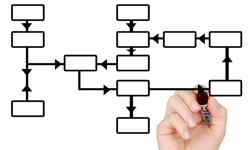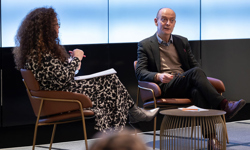These are, to say the least, testing times for traditional publishers. The internet has broken down the walls within media and between media and other businesses across the world. In the process, long-established business models have been shattered by digital operators that have turned heads and created vigorous new competition for readers and advertisers.
But don't believe the apocalyptic predictions. Just as you can be sure that hard copy media - and come to that, free-to-air television - will not actually disappear, you can also be sure that they will never again be so pervasive or so profitable.
The challenge for traditional media is clear from the simple fact of what has changed: what readers and advertisers want and will pay for. So, almost everything. It is the prompt for many publishers to completely change their traditional assumptions of cost, revenue and skills, if they are to compete with new companies that have no such historical baggage. Easier said than done.
The task in some cases is so great that publishers are prone either to paralysis-by-analysis or to seizing the latest new gadget as the "answer" to the big strategic question. Both extremes could, of course, be beneficial - or disastrous - depending on the context. But the number of large and small companies with a continuing dependence on hard copy and a gravitational decline in revenues speaks for itself.
The low level (still) of newspaper and magazine closures in the UK - relative to actual revenue and readership losses - does little more than reinforce the view that many publishers have yet to face up to the reality of what is happening to their markets. Too many are prone to talk simply of the switch from print to digital. That neatly implies a move from one technology to another, rather than the revolutionary change from long-term hard copy to a growing range of ever-changing media options affecting every aspect of media production, distribution and consumption.
The vain search for a silver bullet is understandable of course. Every now and then you hear the hopeful sounds that roughly equate to, "This is it".
That's certainly how it seemed when the iPad captured the imagination of consumers and app developers everywhere. Publishers have been falling over themselves to launch editions for the cool tool that is, conveniently, magazine-shaped. And there are some nice-looking editions on Apple's magic tablet. Some will become profitable, most won't. But neither the iPad nor anything else will be a worthwhile answer to the question about "what next?" for magazines and newspapers. And that's because there is no one answer.
The 3Cs
It is easy to agree that the future for digital media depends on the 3Cs: Content, Community and Commerce. In some respects, media always did. The difficulty for hard copy publishers lies in interpretation. The web has changed everything. But I believe that the most important changes are not so much those of technology as of the attitudes and appetites of readers, as follows:
* Convenience, accessibility and timeliness (functionality) is increasingly as important as the actual provenance of information. Celebrity gossip in 140 characters on Twitter has, for example, completely undermined the once-mighty weekly magazines. In a sense, that is quality (ie gossip direct from celebs) over quantity. But it is more than that. It is also a reflection of the 'information confidence' that has also made a success of bite-sized news in free dailies, where once only the long-read of traditional papers was sufficient. In other areas, there is evidence that professionals as diverse as accountants, lawyers and doctors frequently use Google search as a first-stop preference to time-honoured, authoritative reference sources: "good enough" frequently beats "the best" when the functionality is right. Suddenly, it's not quite all about content.
* This 'information confidence' increasingly helps readers / users to believe that there is rarely any one comprehensive source for everything they require. The web has helped change the media habits of consumers who, for example, once depended for their news and information on a single newspaper or television news programme. Analogue loyalty in media has been replaced by digital promiscuity. This is helping to drive the growth of multi-source online aggregators and digests like Flipboard, Pulse, BuzzFeed, Zite, and Huffington Post. The growing diversity of the web is also helping to motivate the media ambitions of traditional retailers like Tesco, Waitrose and John Lewis, and new-style operators like Amazon, ASOS and Net a Porter. Suddenly, most retailers (and many other businesses too) have developed a sense of 'media' as a way of marketing their existing products and services but also, increasingly, competing in the provision of useful online content. Just as media companies themselves are plotting how to profit from ecommerce, retailers are pushing into media from the other direction.
* Consumers are increasingly absorbed by the views and experiences of their peers. The ability to share experiences via online social networks is changing lives, in business as well as leisure.
The challenge
These web-driven changes in attitude create a huge challenge for traditional media which increasingly needs to become:
* Accessible when, where and how consumers want. The explosion in mobile media consumption is an obvious challenge to traditional media, not least because, increasingly, it dictates the need to be 'live' or, at least, completely up-to-date. The old idea of daily, weekly and monthly frequency - and the distinction between media types - is being swept away by multi-media channels combining video, text, live streaming, social networking, and ecommerce.
* An aggregation of news, information and entertainment from many sources. Media providers must provide a wide range of information and sources for readers - or else they will go and look for themselves. Whether traditional publishers like it or not, proprietorial media (in which all content is created, controlled and owned by the channel provider) is becoming less attractive for readers.
* Actively networked. Media providers cannot afford to let interaction between and among their readers / users be the exclusive preserve of Facebook, Twitter and LinkedIn. The interaction is already a vital part of the content for users of these powering networks. As in online retailing, the provision of 'aggregated' news and information on LinkedIn and Facebook sees these companies pushing into media from the other direction. Media companies need to push back.
It is easy to recognise the modern media challenge represented by the burgeoning development of Huffington Post et al. But it gets worse. Even when newspapers and magazines are able to build online sites with audiences almost to match their hard copy editions, they (mostly) find it difficult to monetise them. It's a painful prompt for commercial reinvention after decades of subsidising hard copy cover prices with all-you-can-eat advertising.
We know about the paywall challenges - and the very small number of clear successes. The recent history of newspapers and magazines suggests that online user revenues will seldom be sufficient to deliver solid profits. That will require advertising and / or other commercial revenues. And few traditional media businesses have seriously tried to develop their online advertising inventories in order to generate serious digital profits. Online is too often managed as ancillary to a traditional hard copy business.
New ad model
The fact is that the full-page ads which have made publishers rich in hard copy have little currency in the digital world. Online needs a new commercial model.
There is an emerging arms race in the online advertising market between data-monster marketers like Google and legislators and pressure groups which are trying to block unsolicited, targeted messages. That is an important battle. But newspaper and magazine publishers must develop their own bespoke ways of developing revenues from different types of smaller-space, directed advertising, enticing advertorials, sponsorship and ecommerce.
There will need to be much more sophisticated development of content-linked promotions: the traditional separation of editorial from advertising just will not work, in many cases. Digital has brought advertisers into the world of 'big data', of needing to monitor, measure and tailor the impact of promotional messages and to understand much more about readers / users.
It is not quite an end to the "flat advertising" of hard copy pages and online banners, but a sure sign that its price will keep falling. The future promise for digital media companies is in getting back to cultivating their readers, building "club-like" audiences and using analytics and content to grow knowledge, data and promotional power for advertisers, ecommerce, - and paying customers.
This change in advertising illustrates the way that the whole media business is having to navigate the painful journey from being a producer of products to a provider of services. There will, of course, continue to be 'packaged' media products like some magazines and books. But the most successful companies will become real-time, multi-media providers of a whole range of digital services.
And that's the point. It's not primarily about either the software or hardware. Future gadgets (and, let's agree that even the so-cool iPad is just transitional) will have all kinds of connectivity and functionality as yet unexplored. Media companies will need to meet the changing appetites of readers / users who want to access, and interact with, information, education and entertainment.
The key will be the quality of relationships with and between those customers. In that sense, it’s as if nothing much has changed in media. But, really, it is only the words that have stayed the same.












